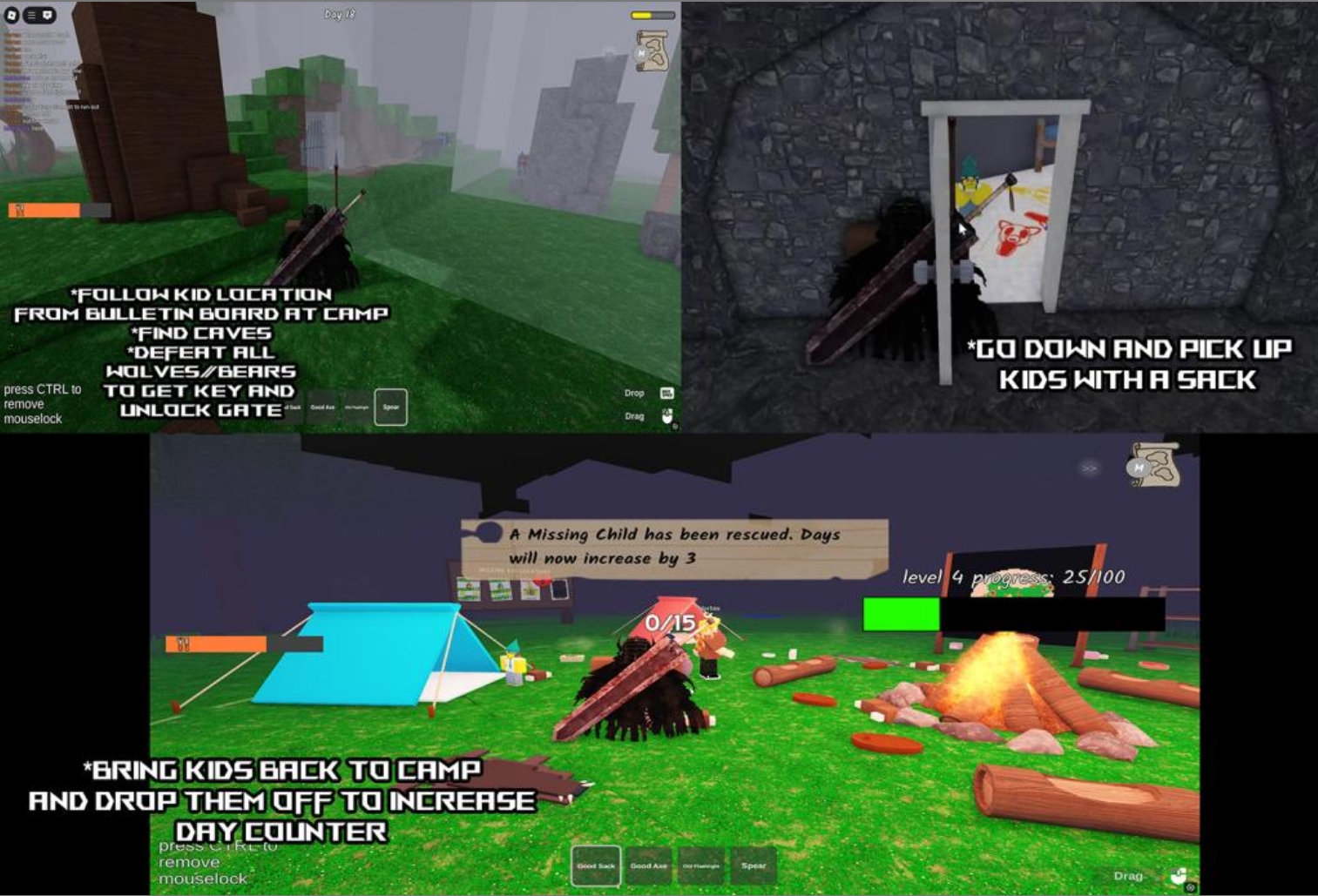The Cornerstone of Forest Survival: Ultimate Guide to Efficient Resource Gathering and Camp Building in 99 Nights in the Forest

In the intense survival horror game 99 Nights in the Forest, efficient resource gathering and solid camp building are the foundation for surviving the grueling 99 nights. Without sufficient wood, your campfire cannot be maintained; without a strong campfire, you won’t withstand the terrifying threats of the night. This guide will walk you through optimizing your wood collection routes and mastering campfire construction and maintenance, ensuring you stand undefeated in the forest.
1. Wood Gathering: The Lifeline of Survival
Wood is the most vital resource in 99 Nights in the Forest. Its scarcity directly impacts how long you can survive. Master these tips to boost your wood gathering efficiency:
Optimal Logging Areas and Respawn Mechanics
- Prioritize Trees Near Your Camp: At the start of the game, always chop trees closest to your campfire first. This minimizes travel time and quickly provides essential wood to build and maintain your fire.
- Create a Circular Harvest Route: As you progress, expand your harvesting area by establishing a loop or fan-shaped route around your camp. Once you finish one section and return to the starting point, trees you first cut down will often have respawned, increasing your efficiency versus random wandering.
- Identify Rich Wood Zones: While trees may look similar, some areas may feature faster wood respawn rates or yield more wood. Observe and memorize these “resource hotspots” for better returns.
- Daytime Collection: Focus your wood gathering efforts during the day when visibility is better and threats like the Deer Monster are less aggressive. Always stockpile enough wood before dusk.
Efficiency Boosting Tips
- Upgrade Tools (If Available): Check if the game supports axe or tool upgrades. Higher-level tools usually chop faster or yield more wood per cut.
- Manage Inventory Weight: Plan how much wood you can carry per trip based on your backpack capacity. Avoid overloading to ensure a safe return.
- Clear Frequent Paths: Remove minor obstacles or unnecessary small trees along your routes to speed up repeated trips.
2. Campfire Building and Maintenance: Guardian of the Night
The campfire is more than light and warmth—it’s your primary defense against the Deer Monster and essential for survival.
Building Your Campfire and Initial Investment
- Choose a Strategic Location: Build your first campfire in an open, flat area away from dense trees. This gives better visibility to spot approaching threats early.
- Gather Wood First: Before venturing deep into the forest, ensure you have collected enough wood to build your initial campfire.
Maintaining Your Campfire and Timing Wood Addition
- Keep Adding Wood: The campfire slowly burns out over time. You must regularly add wood to maintain its flames. Fire size and light radius indicate fuel status—the smaller and dimmer, the sooner you need to refuel.
- Key Moments to Replenish:
- Before Dusk: Fully stock your fire and keep extra wood nearby before nightfall.
- During Night: Even without Deer Monster attacks, monitor the fire regularly. You may not have time to gather wood during an attack.
- Priority During Attacks: When the Deer Monster approaches, maintaining a blazing fire is your top priority—even more important than fighting or fleeing.
Importance of Campfire Levels (If Applicable)
In some versions of 99 Nights in the Forest, campfires can be upgraded, which may involve investing more wood or other resources like stones.
- Benefits of Upgrading:
- Larger Light Radius: A bigger safety zone keeps threats further away.
- Stronger Deterrent: Higher-level fires have increased power to repel monsters.
- Longer Burn Time: Less frequent need to add fuel, freeing time for other tasks.
- Extra Features: Occasionally, upgraded campfires unlock additional functions like basic crafting or temporary shelters.
If campfire upgrades exist, prioritize basic survival first, then upgrade to boost your long-term chances.
Conclusion: Survival Lies in Preparation
Efficient wood gathering and strategic campfire management are the two pillars of survival in 99 Nights in the Forest. Remember: daytime is for labor, nighttime is for defense. With careful planning and foresight, you’ll ignite the flame of hope in this mysterious forest and ultimately greet the victorious dawn.
Good luck surviving the forest!